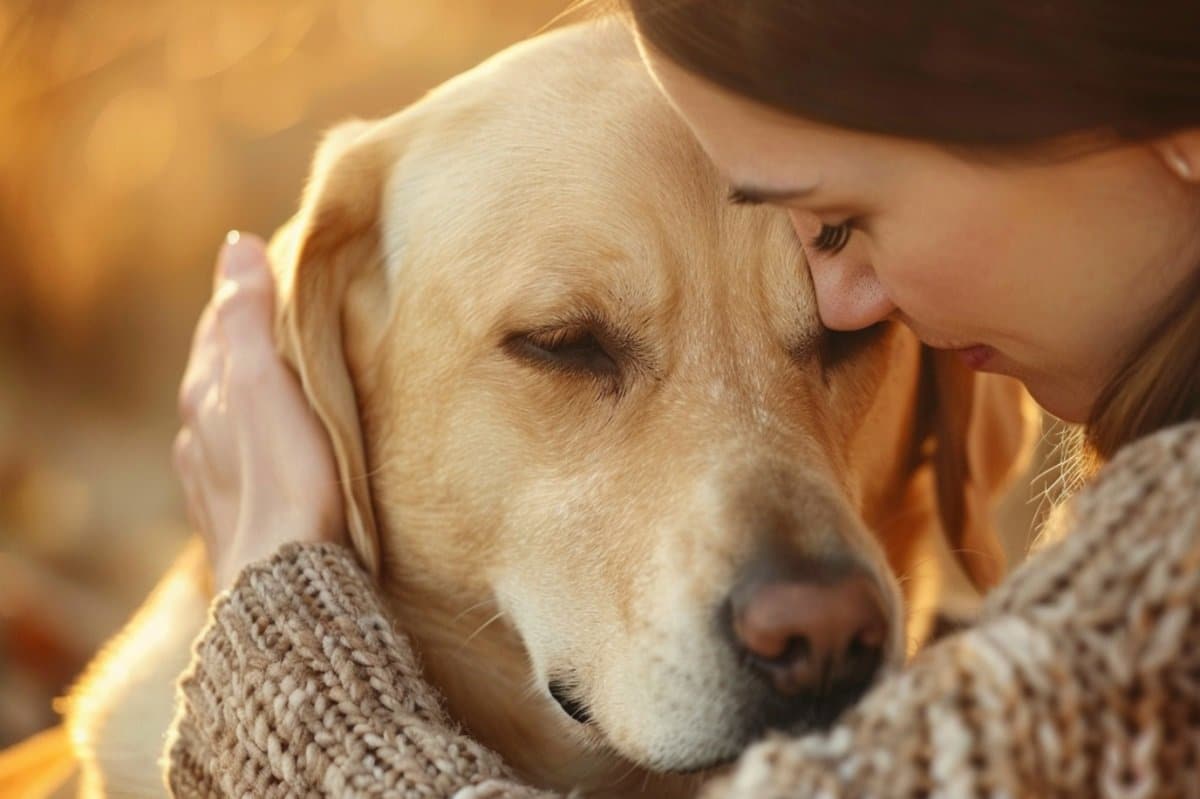Research from the University of Bristol has revealed an insight into the relationship between humans and dogs on how the smell of human stress can affect dogs’ emotions and behavior. This study was published in Scientific Reports on July 22, 2024 and it is the first of its kind to investigate the impact of human stress odors on dogs’ learning and emotional states.

Also Read: Night Owls have Better Cognitive Ability than Early Risers
The study shows that dogs experience emotional contagion from the smell of human stress leading them to make more pessimistic choices.
Emotional contagion refers to the phenomenon where one individual’s emotions and related behaviors trigger similar emotions and behaviors in others.
This research suggests that dogs are highly sensitive to the emotional cues emitted by humans through olfactory signals.
Dogs exposed to the smell of human stress exhibited a noticeable change in their emotional state. They showed increased levels of pessimism which shows a negative emotional state.
The stress odor seemed to increase the dogs’ expectations that a new, ambiguous situation (like finding food in a bowl) would result in a negative outcome.
The study employed a behavioral test known as the cognitive bias task to assess the dogs’ emotional state through their decision-making process.
Dogs trained to distinguish between a food bowl with a treat and an empty bowl showed different responses when introduced to bowl locations under different odor conditions.
When exposed to the stress odor, dogs were slower to approach ambiguous bowl locations. This effect was not observed with relaxed odors or no odors at all.
The presence of stress odors seemed to enhance dogs’ ability to learn and differentiate between the trained locations of bowls with food and those without.
Dogs improved their learning about the presence or absence of food more rapidly when the stress smell was present.
The study provided evidence that dogs can pick up on human stress through olfactory cues affecting their emotions and perceptions of reward.
Dogs appeared to absorb the emotional state of humans leading to shifts in their optimism and pessimism.
The study found that dogs can smell stress through changes in human sweat and breath. Dogs exhibited different behaviors when exposed to the scent of a stressed person compared to a relaxed individual.
This ability suggests that dogs may be more attuned to human emotions than previously understood.
The concept where an animal or human picks up on the emotions of others leading to a similar emotional state. Dogs experiencing human stress odors showed signs of emotional contagion, meaning the stress they perceived affected their own emotional state.
Also Read: Fossil Chromosomes from Woolly Mammoth Discovered in 52,000-Year-Old Freeze Dried Skin
This emotional response could lead to dogs making more ‘pessimistic’ choices. The study’s results with similar findings in humans where stress odors can subconsciously influence emotions and decisions.
The research involved 18 dog-owner pairs with dogs ranging in age from 8 months to 10 years old. Breeds included Springer Spaniels, Cocker Spaniels, Labrador Retrievers, Braque d’Auvergne, Whippets, Golden Retrievers, Miniature Poodles and mixed breeds.
Eight of the participating dogs were registered as teaching dogs at the University of Bristol.
Dogs were trained to differentiate between a food bowl that contained a treat and one that did not. This training helped establish baseline behaviors.
The study used a test of optimism or pessimism, where dogs’ speed in approaching ambiguous food bowl locations was measured.
Dogs’ approach speed to a new, ambiguous food bowl location served as a marker for their emotional state. Indicative of optimism and a positive emotional state suggesting the dog expected a treat.
Human participants were subjected to stress-inducing and relaxing activities to create odor samples. Stress was induced using an arithmetic test, while relaxation was achieved through listening to calming soundscapes.
Sweat and breath samples were collected from participants in both states to use as odor stimuli for the dogs.
Dogs were trained to associate specific locations of food bowls with either the presence or absence of treats. The test involved placing bowls at new, ambiguous locations between the trained locations and observing the dogs’ approach speed and decision-making.
Trials were conducted under three odor conditions, stress odor, relaxed odor and no odor (control).
Researchers analyzed the dogs’ approach speed to ambiguous bowls using it as a measure of optimism or pessimism.
Dogs in stressful environments such as kennels might be negatively impacted by human stress affecting their performance and well-being.
Trainers and handlers can use this information to create more supportive environments that tackle stress-related odors.
Also Read: Scientists Design New Spacesuit that Can Turn Urine into Drinking Water




